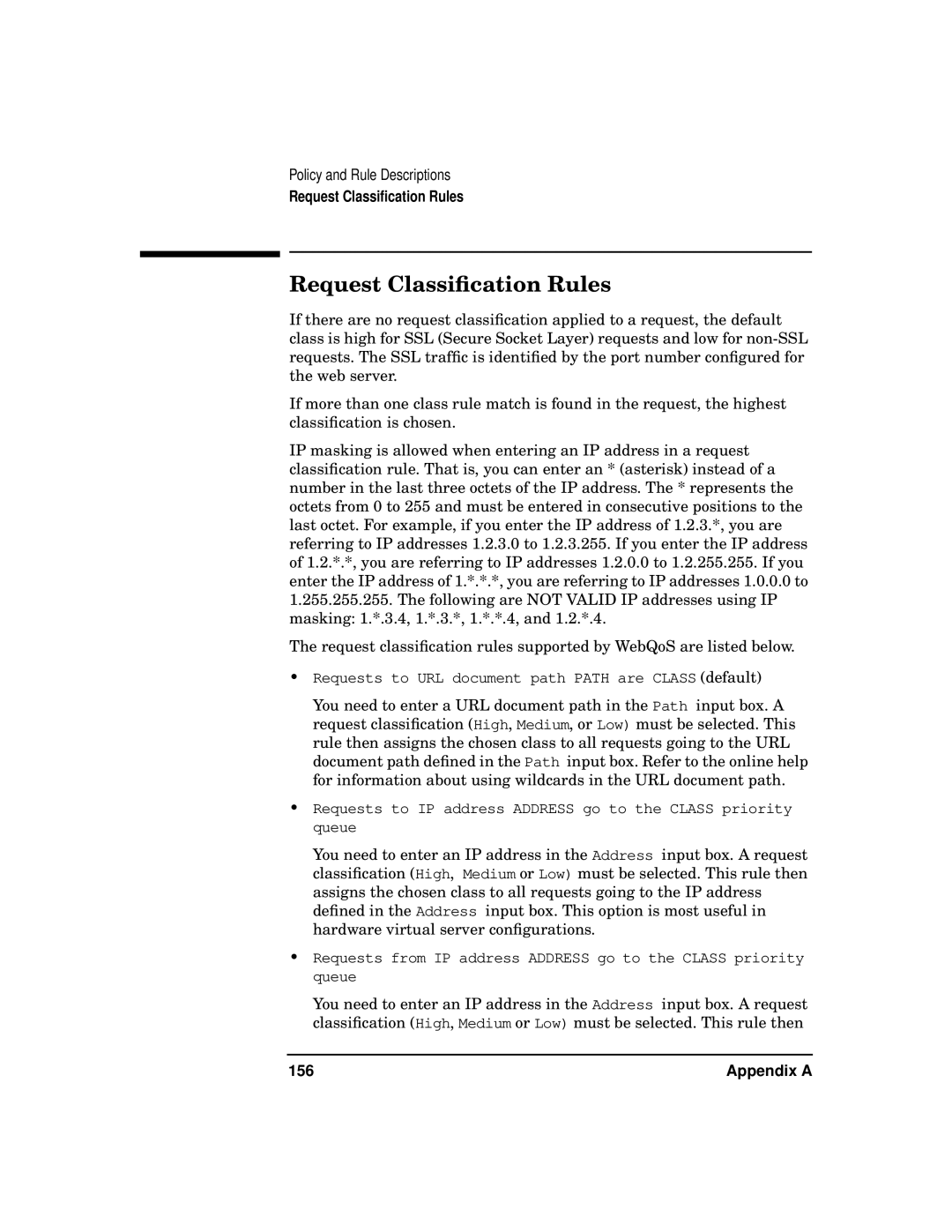
Policy and Rule Descriptions
Request Classification Rules
Request Classification Rules
If there are no request classification applied to a request, the default class is high for SSL (Secure Socket Layer) requests and low for
If more than one class rule match is found in the request, the highest classification is chosen.
IP masking is allowed when entering an IP address in a request classification rule. That is, you can enter an * (asterisk) instead of a number in the last three octets of the IP address. The * represents the octets from 0 to 255 and must be entered in consecutive positions to the last octet. For example, if you enter the IP address of 1.2.3.*, you are referring to IP addresses 1.2.3.0 to 1.2.3.255. If you enter the IP address of 1.2.*.*, you are referring to IP addresses 1.2.0.0 to 1.2.255.255. If you enter the IP address of 1.*.*.*, you are referring to IP addresses 1.0.0.0 to 1.255.255.255. The following are NOT VALID IP addresses using IP masking: 1.*.3.4, 1.*.3.*, 1.*.*.4, and 1.2.*.4.
The request classification rules supported by WebQoS are listed below.
•Requests to URL document path PATH are CLASS (default)
You need to enter a URL document path in the Path input box. A request classification (High, Medium, or Low) must be selected. This rule then assigns the chosen class to all requests going to the URL document path defined in the Path input box. Refer to the online help for information about using wildcards in the URL document path.
•Requests to IP address ADDRESS go to the CLASS priority queue
You need to enter an IP address in the Address input box. A request classification (High, Medium or Low) must be selected. This rule then assigns the chosen class to all requests going to the IP address defined in the Address input box. This option is most useful in hardware virtual server configurations.
•Requests from IP address ADDRESS go to the CLASS priority queue
You need to enter an IP address in the Address input box. A request classification (High, Medium or Low) must be selected. This rule then
156 | Appendix A |
